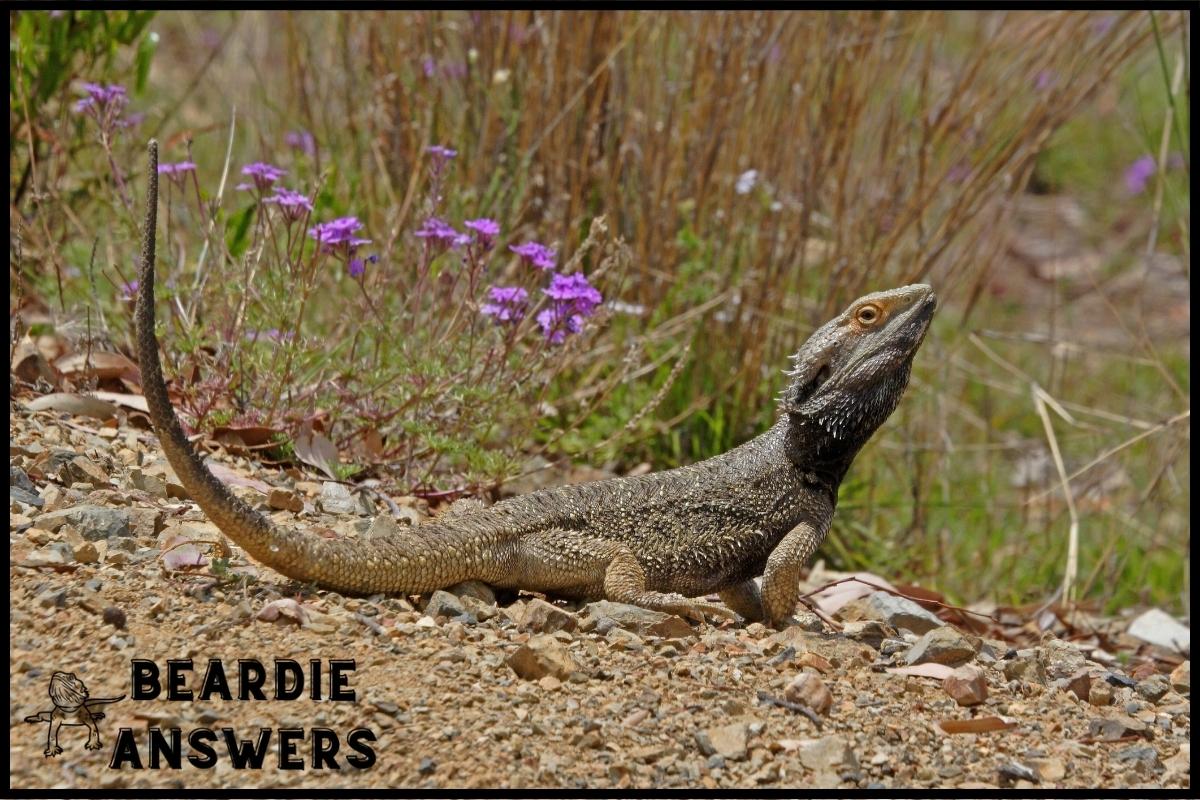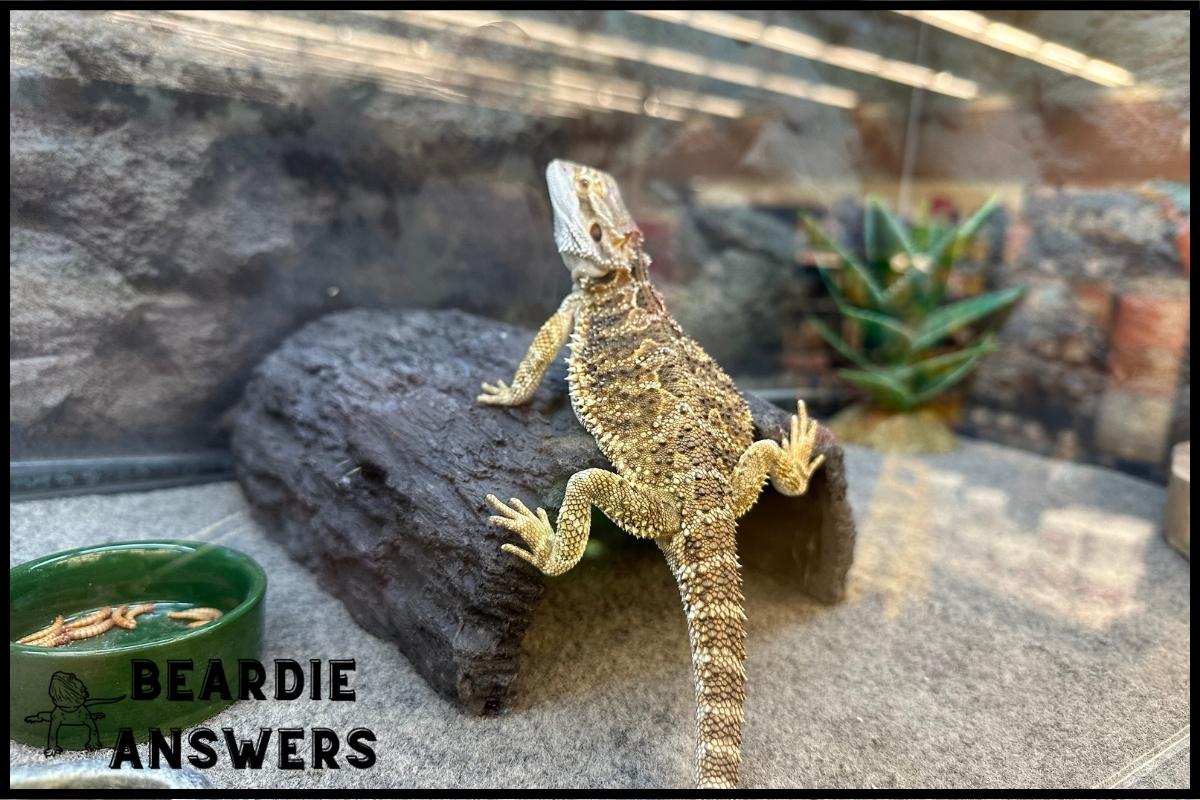How often does a bearded dragon shed: Bearded dragons shed their skin every few months as they grow, although shedding frequency can vary based on their age, diet, and environment. During shedding, bearded dragons may appear dull, and their skin may appear flaky or loose. It is important to provide a humid hide and mist their enclosure during shedding to help them remove the old skin more easily.
What You'll Learn
Understanding The Shedding Process
The shedding process of a bearded dragon is as mysterious and fascinating as the creature itself. It’s like watching an ancient ritual unfold; one that has been followed for centuries with no signs of changing any time soon.
As if moved by some unseen force, these reptiles will periodically shed their old skin to make way for new growth – but it doesn’t happen haphazardly or spontaneously. The frequency of the molting process depends on several factors such as bathing frequency, humidity levels, and overall health of the animal.
A healthy bearded dragon should molt every few months depending on its age and size. By properly managing their environment, you can help ensure your pet sheds regularly at a comfortable pace – not too frequent, but also not too slow.
If they are exposed to dry air or infrequent water baths then they may take longer than usual to renew themselves with new skin. On the other hand, too much moisture in the atmosphere could lead them to shed more often than necessary.
It is important to be aware of all environmental conditions when trying to establish a consistent shedding schedule for your reptile companion so that their body does not become overtaxed from frequent molting cycles nor hindered from growing due to lack thereof.
With proper care and attention, you can guarantee your little friend stays happy and healthy while going through this natural transition smoothly each time. Signs of impending molting will soon follow…
Signs Of Impending Molting
One of the most obvious signs that a bearded dragon is about to molt is a change in color. Their coloring will often become duller, and they may take on a more yellowish hue. Additionally, their appetite may decrease as their bodies prepare for the molting process. Environmental triggers such as changes in temperature can also be an indicator of impending shedding. As their bodies regulate their temperature, it can cause them to enter into a pre-molt state.
Other signals that your dragon is getting ready to shed include:
Increased irritability or aggression
This could manifest through hissing at you when you approach him or increased pacing around its enclosure.
Loss of appetite
Your pet may not want to eat anything leading up to the molting period as this requires energy which he needs to use for the actual molting process itself.
Clumsiness or trouble moving around
The dragon’s skin becoming dry and tight can make it difficult for them to move normally while they are molting. It’s important to monitor your pet during this time and ensure he has access to plenty of water so he doesn’t get dehydrated from all the activity going on beneath his scales!
In addition, juvenile dragons tend to shed more frequently than adults due to rapid growth spurts as they age. Knowing these signs can help you better anticipate when your dragon may need some extra attention before shedding begins – allowing you both a chance for peace and relaxation during this stressful event! Shedding frequency in juvenile dragons is something we’ll explore in greater detail next.
Shedding Frequency In Juvenile Dragons
The shedding process of a bearded dragon is a fascinating and mysterious phenomenon. As the juvenile dragon grows, it must shed its skin in order to accommodate for the body’s expansion.
But just how often does this occur? It’s not as simple as one might think!
Several environmental factors can influence the rate at which a juvenile beardie sheds their skin. For example, water intake and temperature control are two key considerations when trying to understand if and when your dragon will need to slough off its old outer layer.
Too much or too little of either factor can cause the shedding cycle to be delayed or even accelerate beyond what would normally be expected.
It is important that you take into account all these components when deciding on an appropriate care plan for your pet reptile. Properly managing water intake and temperature levels ensures that your bearded dragon stays healthy and comfortable while also helping them shed regularly every few months as they grow.
Shedding Frequency In Adult Dragons
Adult bearded dragons typically shed their skin every few months as they grow. However, the shedding frequency rate can vary depending on a number of factors such as dietary needs and humidity levels in the environment.
An adult dragon’s diet should include an adequate amount of calcium, vitamin D3, and phosphorus to help with healthy skin growth and shedding. Additionally, it is important for owners to maintain proper humidity levels in order for their dragon’s shedding process to be successful.
Inadequate nutrition or improper environmental conditions may cause a delay in the shedding cycle or lead to excessive amounts of skin being retained which can cause discomfort or even medical issues down the line. Therefore, it is important that owners ensure that their dragon has access to all necessary nutrients along with providing them with appropriate levels of heat and humidity while they are growing up.
By doing so, they can help ensure that their pet stays comfortable throughout its life and avoid any potential health problems caused by inadequate care. Regularly monitoring your dragon’s health will also allow you to observe whether it is successfully completing its regular shedding cycles or if there are any signs indicating something might be wrong with its environment or diet.
This way, owners can quickly identify any underlying issues before they become more serious and take action to correct them promptly. With this information in hand, we can move onto discussing how often do aging dragons shed?
Shedding Frequency In Aged Dragons
Bearded dragons typically shed their skin every few months as they grow older. As a result, the shedding frequency in aged dragons can vary significantly between individuals. On average, an adult bearded dragon may shed its skin once every three to four months; however, some specimens have been known to molt as often as twice a month.
It is important for owners of aging bearded dragons to be aware of their pet’s dietary needs and habitat requirements during molting periods. A balanced diet with plenty of calcium and phosphorus are especially essential during this time due to increased stress on the body caused by frequent shedding. Additionally, providing a humid or moist environment helps promote healthy sloughing off of old skin.
To ensure that your bearded dragon is receiving the best care possible during its molting period, it is important to monitor temperature and humidity levels closely and provide ample basking spaces along with plenty of fresh fruits and vegetables fitting into their nutritional plan.
Here are five key points you should keep in mind when caring for your aging beardie:
- Ensure adequate hydration through regular mistings
- Create multiple basking spots at varying temperatures
- Offer nutrient-rich food sources such as insects, dark leafy greens, etc.
- Regularly dust feeder insects with calcium supplements (i.e., Repashy Calcium Plus)
- Monitor environmental parameters including heat/UVB output regularly
Taking all these factors into account will help give your aged dragon the proper care needed while transitioning from one set of scales to another.
Providing The Right Care During Molting
As bearded dragons grow, their skin sheds every few months in a process known as molting. It’s important for owners to provide the right care during this time so that their dragon can molt without any problems.
When caring for an aging dragon during its shedding period, one must be mindful of bathing frequency and humidity levels.
Bathing frequencies should be reduced during the shedding period because too much water on the beardie’s body can cause irritation or infection. An occasional bath is fine but try not to bathe them more than once a week if possible.
Humidity levels also need to be monitored since it has significant influence over how well their skin sheds; maintaining 40-60% relative humidity (RH) is ideal for most species of aged dragons. If you notice your pet struggling while they are trying to shed, misting with warm water or adding some air humidifiers may help keep the RH at optimal levels.
Molting periods can be stressful times for both owner and pet alike, but following these simple tips will ensure that your pet has a safe and successful experience each time they shed their skin. With proper preparation and care, there’s no reason why your elderly dragon cannot enjoy a comfortable life even as it continues through successive molts!
Conclusion
Molting is a natural process that all bearded dragons go through as they grow. It can be stressful for them, but with the right care and attention, it doesn’t have to be.
Our responsibility is to provide them with the best environment possible so their shedding cycle runs smoothly; this will ensure that they remain healthy and happy in the long run.
Just like us, when we want something more than anything else, our success depends on how much effort we put into achieving it – which rings true for our scaly friends too.
With patience and love, you’ll both get through this life-stage together!

Hi! My name is Bryan, I am the “one behind the words” here are BeardieAnswers.com. I believe that providing quality care and nutrition is the best way to ensure the health of your pet. Every beardie is special and deserves the best care and attention. If you have questions about your bearded dragon, please don’t hesitate to ask! View My Full Author Page




